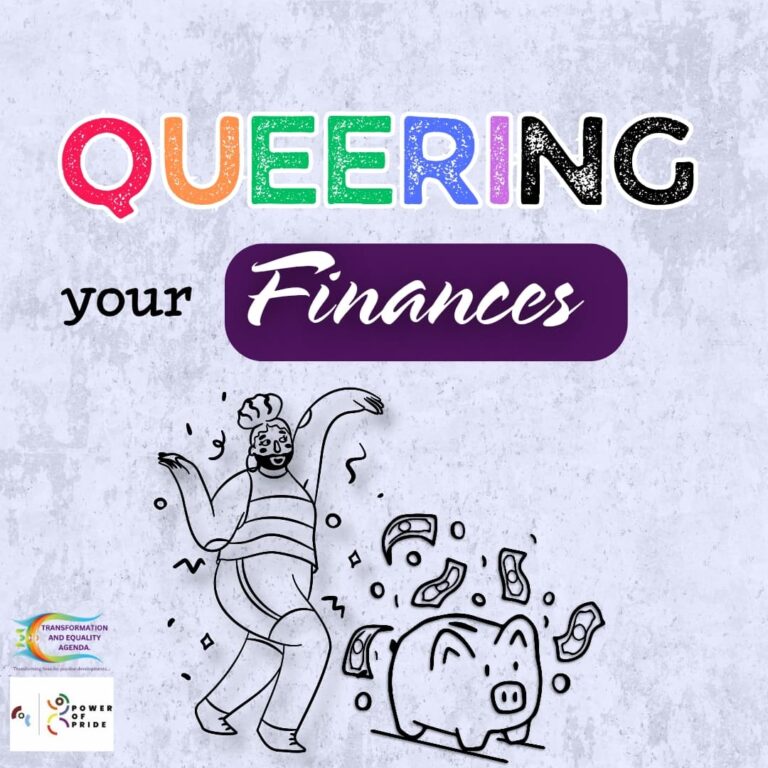
Financial literacy is the ability to understand and effectively use various financial skills. It is the vital life skills that empower individuals to make informed decisions about their financial resources. Financial literacy is the ability to understand the use of money as it applies to your personal finances. For members of the LGBTQI+ community, financial literacy can be particularly crucial due to the unique challenges and disparities.
These financial skills include budgeting, saving, debt management, and investing. This piece will explore the importance of and the need for financial literacy for queer individuals and provide guidance on getting started.
Challenges Faced by the LGBTQI+ Community
The members of the LGBTQI+ community face various challenges that impact their financial stability; these challenges include:
Discrimination: LGBTQI+ individuals face significant workplace discrimination, unequal pay, and limited job opportunities, which impact their income and financial stability.
Financial Insecurity: The higher rate of poverty, unemployment, or underemployment in the country makes it difficult for queer persons to manage their finances.
Limited Access to Resources: Few organizations and resources are available to support LGBTQI+ individuals, and barriers to accessing financial services, healthcare, or social support can exacerbate financial difficulties. Higher healthcare costs can also impact financial stability.
Family Rejections: Some LGBTQI+ individuals experience family rejection, leading to financial instability or homelessness.
Income Inequality: LGBTQI+ individuals face lower income or wage gaps due to their sexuality or gender identity compared to non-LGBTQI+ peers
Social Isolation: Limited social support or networks can make it harder to navigate financial challenges.
The Benefits of Financial Literacy
In the face of all these challenges, there’s a need for financial literacy to know and understand these various financial skills to enable them to make informed decisions. The benefits include
Increased Financial Stability: Financial literacy helps individuals manage their finances effectively, reducing financial stress and increasing stability by creating budgets and tracking expenses, building emergency funds, and paying debt (debt management).
Improved Financial Decision-Making: By understanding financial concepts, LGBTQ+ individuals can make informed decisions about investments such as stocks, bonds, ETFs, etc., savings accounts, and debt management.
Empowerment: Financial literacy empowers LGBTQI+ individuals to take control of their financial lives, building confidence and independence by setting financial goals and creating plans to achieve them, making informed decisions about financial products and services, and avoiding financial scams or predatory practices.
Long-Term Planning: Financial literacy enables LGBTQI+ individuals to plan for the future, including retirement savings, long-term care planning, etc.
Principles of Financial Literacy
There are principles of financial literacy that can help LGBTQ+ individuals maintain financial stability.
Earning: This is not just about your income or salary but also other benefits that come your way. We should not be comfortable with just our salaries; try as much as possible to have other streams of income. Go for professional development, which will increase your earning potential. Utilizes opportunities at your disposal to increase your earnings.
Saving and Investing: There’s a saying that “it is not about how much money you make; it is about what you keep that counts.” Saving directly immediately when your salary comes or you earn a benefit or income is a great way to put your savings on point; save before expenses. An intentional saving plan and investing strategy help you grow your wealth over time. Savings and investment start with a budget. Develop a budget plan. There are two budget plans:
50:30:20 budget plan: 50% to your needs, 30% to wants, and 20% to saving and investing.
80:20 budget plan: Pay yourself first by setting aside 20% for saving and using 80% for the fixed and variable expenses.
Spending: Spend responsibly, live within your means. Be a savvy shopper and avoid impulse purchases. Use your money toward achieving your goals and things that you truly value.
Borrowing: This is about maintaining good credit scores; don’t take a loan for frivolity. When you take loans, pay on time. Before you borrow, it should be for a just cause, something that will yield or give value. Avoid excessive debt that can eat deep into your ability to save and invest in the future.
Practical Steps in Getting Started with Financial Literacy for LGBTQI+ Individuals
Seek Out Local Resources: Look for organizations or support groups that provide financial guidance and support for LGBTQI+ individuals.
Basic Financial Education: Learn basic financial concepts, such as budgeting, saving, and debt management. Seek out resources, workshops, or online courses that focus on financial literacy, and create a budget that accounts for income, expenses, and saving goals.
Build a Support Network: Connect with other LGBTQI+ individuals who can provide support and guidance on financial matters.
Conclusion: Financial literacy is a powerful tool for LGBTQI+ individuals, enabling them to navigate financial challenges and achieve stability. By prioritizing financial education and empowerment, queer individuals can build a brighter financial future.


